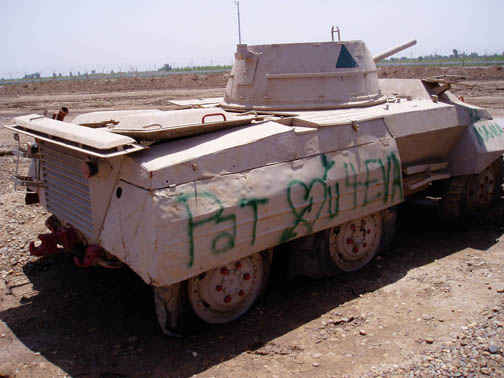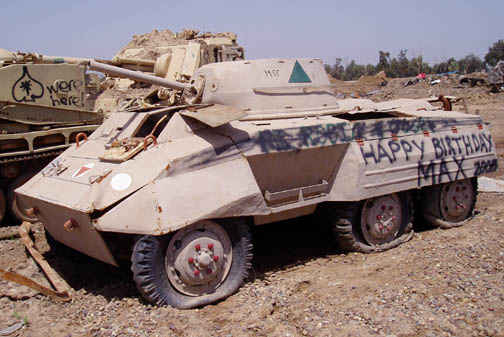Armored car, M8 number 8438, has survived the "scrap heap" and now lives
on as a traveling museum of World War II. It is used in reenactments, public
displays and various tactical battles sponsored by reenactment societies.
ADDITIONAL TECHNICAL DATA
Weight................16500 lb.
Length.............16 ft. 5 in.
Width...............8 ft. 4 in.
Height..............6 ft. 6 in.
Armament:
1 37 mm Gun, M6; ammunition
A.P.C., M51B1, M51B2; A.P.,
M74; H.E., M63
1 caliber .30 machine gun
1 caliber .50 machine gun
Maximum speed............56 mph
Turning radius...........28 ft.
Maximum grade..............60 %
Copyright 1995 Charles C. Roberts, Jr




 BACK TO ROBERTS ARMORY HOME PAGE
BACK TO ROBERTS ARMORY HOME PAGE